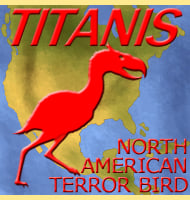Limnofregata
In Depth Limnofregata is a genus of bird that many have commented on about its similarity to modern frigatebirds (genus Fregata), however there are a number of differences. First and foremost is the obvious fact that Limnofregata lived inland around freshwater, whereas modern frigatebirds live by the sea. There, frigatebirds rely upon soaring as a … Read more



